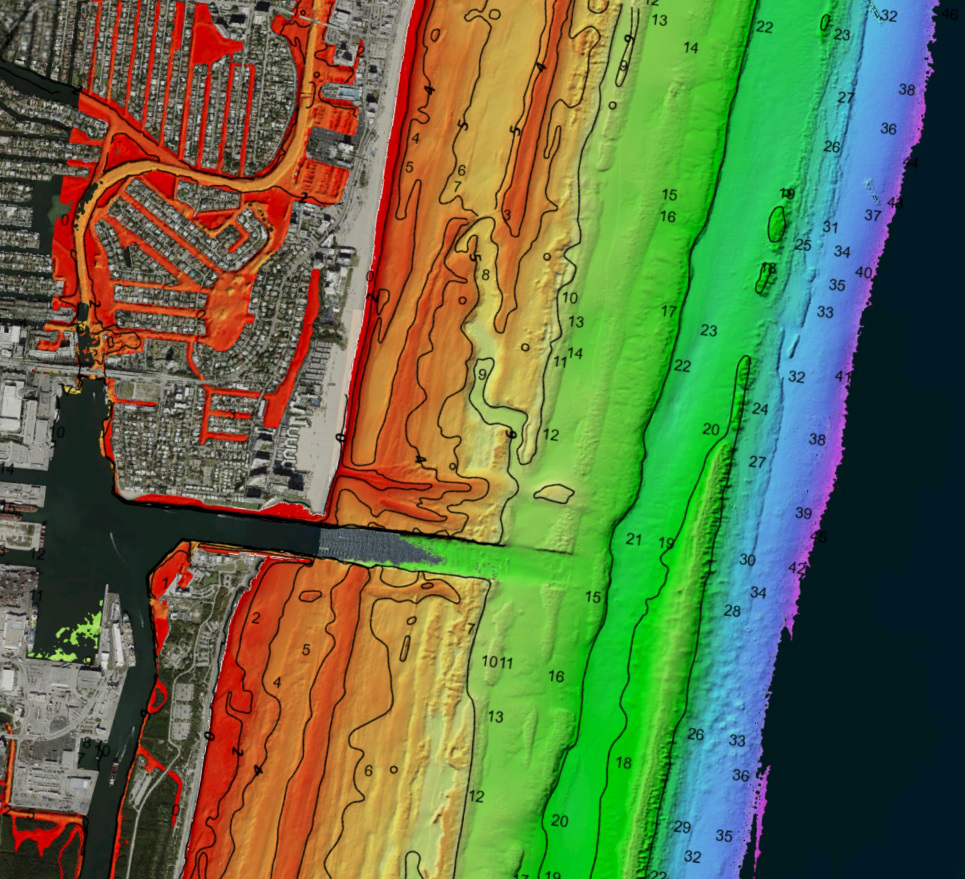One of the product preview presentations that took place at Geo Week that caught our eye was an overview of Woolpert’s new topo-bathy lidar sensor. Designed to fly at higher altitudes and capture a wider footprint, this new sensor is a serious step in development for the topobathymetric measurement community.
In January, Woolpert was granted a US patent for an “Airborne Topo-Bathy Lidar System and Methods Therof.” A lidar sensor system incorporating these technologies that enable the collection of high-resolution topographic and bathymetric data at a higher altitude, resulting in a broader swath than previously developed lidar systems.
“Commercially available airborne lidar bathymetry systems currently operate at low altitudes, which are far below the altitudes of topographic lidar systems,” Woolpert Lead Scientist Nathan Hopper said.
“Increasing the operational altitude of airborne lidar bathymetry systems to 10,000 feet presented several challenges that required novel approaches. This patent covers the proprietary technology developed to overcome the many challenges associated with high-altitude topography and bathymetry.”
The new lidar sensor system is the result of a research and development effort. Woolpert established a research and development lab and assembled a team of engineers and scientists, to develop a high-altitude topo-bathy lidar sensor system incorporating these patented technologies. The effort resulted in the Bathymetric Unmanned Littoral LiDar for Operational GEOINT, or BULLDOG. During his Product Preview presentation at Geo Week, Hopper said the collaboration was the key to the project’s success.
“We have a whole team of engineers, scientists, operators, that have participated in fashion… whether it was design, evaluation, testing, operations - a full spectrum of topographic, hydrographic, and atmospheric lidars. All that knowledge has been brought to bear with this project.”
According to Woolpert, These technologies were born out of a need to equip the U.S. Army Corps of Engineers with the capability to collect greater detail over larger areas, as well as a providing a more efficient, safer and cost-effective means of doing so. The research that went into the development of these technologies will not only support future sensor development efforts but will enable more efficient data collections for the Joint Airborne Lidar Bathymetry Technical Center of Expertise (JALBTCX), its partner organizations and Woolpert’s commercial clients.
The patent applies to the technologies that enable the lidar system’s optical design, hybrid detector approaches and field of view management. Reformatting hardware was invented to allow for the illumination of a full detector array, increasing the probability of detection. Hopper said the team’s primary design focus was maximizing the use of three wavelengths of light—532, 647 and 1,064 nanometers—by distributing them into distinct detector channels designed for shallow water, deep water, Raman and topo. The infrared light is further split into a linear mode and Geiger-mode channel explicitly utilized for sea surface and topographic measurements. This hybrid approach coupled with reformatting capabilities supports increased spatial resolution and reduces vertical biases.
Because of the crucial nature of the areas where land meets water, this new sensor could allow for more responsive imaging of sensitive areas. With a wider swath and faster collection, data from oceans, lakes and other waterways can more easily help track erosion, monitor the environmental impact of natural disasters, perform volumetric studies, support sediment management, ensure safe navigation and port security, and drive economic development.






